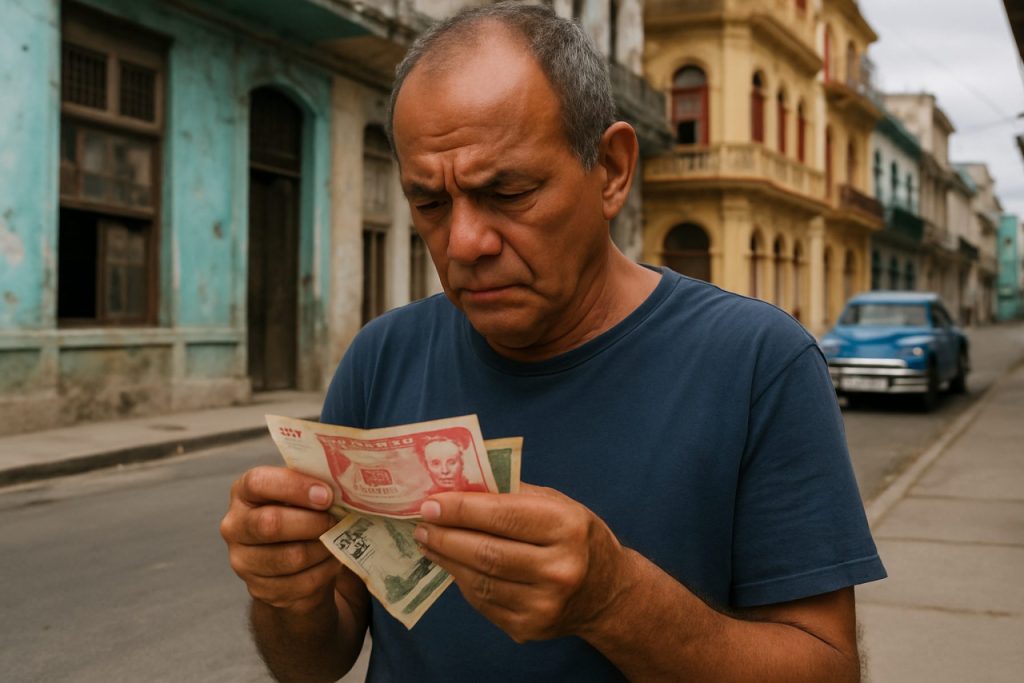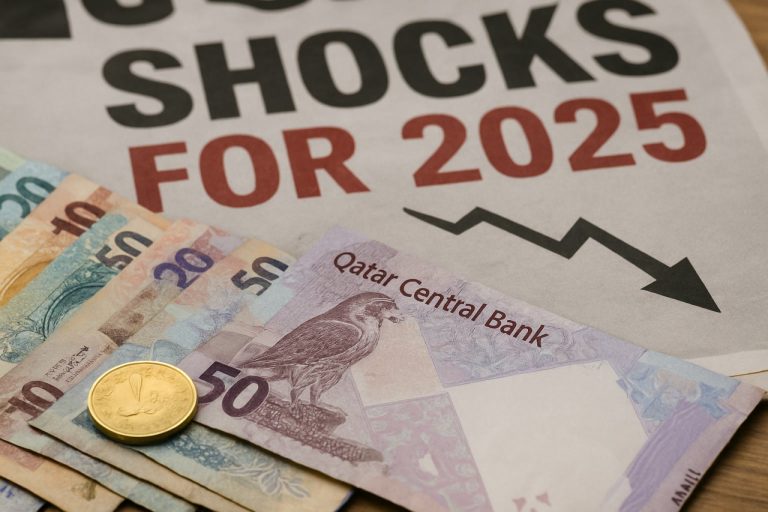
Table of Contents
- Executive Summary: Inflation in Cuba 2025
- Key Economic Drivers Behind Cuban Inflation
- Annual Inflation Statistics: 2021–2025
- Government Policy Responses and Monetary Controls
- Cuban Peso Volatility: Exchange Rate Impacts
- Sector Spotlight: Food, Energy, and Transport Price Surges
- Social Impact: Household Budgets and Poverty Levels
- Legal & Tax Implications: Compliance and Regulatory Updates
- Outlook: Projections Through 2028
- Official Resources & Further Reading (Banco Central de Cuba, Ministerio de Economía y Planificación)
- Sources & References
Executive Summary: Inflation in Cuba 2025
Cuba faces ongoing inflationary challenges in 2025, reflecting persistent macroeconomic imbalances, currency distortions, and external pressures. Since the implementation of the “Ordenamiento Monetario” (Monetary Ordering) in January 2021—which unified the Cuban peso (CUP) and convertible peso (CUC)—the country has experienced significant price instability. Official data from the Oficina Nacional de Estadística e Información (ONEI) indicates that annual consumer inflation reached 39.07% in 2023, with food and basic goods registering the highest increases. Early 2025 figures continue to show upward price momentum, with monthly inflation rates exceeding 3% in several key categories.
The Cuban government’s efforts to stabilize prices have included administrative price controls, rationing, and ongoing subsidies for essential goods. However, these measures have struggled to contain inflationary pressures, in part due to constrained foreign exchange reserves, supply chain disruptions, and the devaluation of the Cuban peso in the parallel market. The exchange rate gap between the official and informal markets remains wide, with the unofficial rate sometimes exceeding four times the official rate, further exacerbating cost-push inflation.
Legal and institutional responses have centered on tightening monetary policy, restricting liquidity, and enhancing oversight of retail pricing and distribution. The Banco Central de Cuba has maintained stringent controls on currency issuance and credit, while the Ministerio de Finanzas y Precios has introduced revised price ceilings for strategic consumer goods. Compliance remains inconsistent, as enforcement capabilities are challenged by widespread informal market activity and limited administrative capacity.
Key statistics underscore the severity of the situation: according to the latest figures from ONEI, the cumulative inflation rate for 2024 is projected to surpass 30%. Food prices, which constitute a large share of the consumer basket, have increased by over 50% year-on-year in several categories. Wages and pensions have not kept pace with rising living costs, contributing to declining real purchasing power and fueling social discontent.
The inflation outlook for Cuba in 2025 and the next few years remains uncertain. Without substantial improvements in domestic production, foreign investment, or access to external financing, price pressures are expected to persist. The government’s policy trajectory will likely focus on further currency reform and limited liberalization measures, but structural constraints and compliance gaps are set to challenge inflation control efforts. Official projections from Banco Central de Cuba indicate that a return to single-digit inflation is unlikely before 2027, underscoring the need for comprehensive reforms to restore macroeconomic stability.
Key Economic Drivers Behind Cuban Inflation
Cuba’s inflation trends in 2025 remain shaped by a complex interplay of domestic economic reforms, persistent supply constraints, and external shocks. The most significant driver continues to be the aftermath of the 2021 “Ordenamiento Monetario” policy, which unified the Cuban peso (CUP) and eliminated the convertible peso (CUC). This reform led to a substantial devaluation of the CUP and a sharp rise in prices across basic goods, services, and energy. Official data indicate that consumer prices continued increasing in 2023 and 2024, with the annual inflation rate surpassing 30% in late 2024, according to the Oficina Nacional de Estadísticas e Información.
Supply-side factors have been particularly acute: chronic shortages of food, medicine, and fuel—aggravated by U.S. sanctions and pandemic aftermath—have forced the government to import at higher costs, further pressuring domestic prices. The state’s central role in price-setting, combined with bureaucratic inefficiencies, has also led to price distortions between the informal and formal sectors, widening the gap between official and black-market exchange rates. In 2024, the informal market exchange rate exceeded 300 CUP per U.S. dollar, more than four times the official rate, compounding imported inflation (Banco Central de Cuba).
Legislative responses have included price controls on staple goods and targeted subsidies for vulnerable populations. The Ministry of Finance and Prices continues to regulate prices for essential items, but enforcement remains inconsistent, and compliance is undermined by scarcity and the proliferation of informal markets (Ministerio de Finanzas y Precios). In 2025, new measures to increase transparency in price-setting and to digitize subsidy delivery are being piloted, but their impact is yet to materialize.
Looking ahead, the inflation outlook for Cuba remains challenging. Structural dependencies on imports, a lack of foreign exchange earnings (notably from tourism and remittances), and continued currency volatility are expected to sustain elevated inflation rates through 2025 and beyond. Unless there are significant increases in domestic production capacity and a normalization of external relations, inflationary pressures are likely to persist. The government has signaled an intention to gradually liberalize some sectors and attract foreign investment, but tangible economic stabilization will depend on successful implementation and external conditions (Presidencia de la República de Cuba).
Annual Inflation Statistics: 2021–2025
Cuba has experienced volatile inflation trends since 2021, driven by a complex interplay of monetary reforms, currency devaluation, and ongoing structural challenges. The introduction of the Ordenamiento Monetario (Monetary Ordering) at the start of 2021, which unified the Cuban peso (CUP) and eliminated the convertible peso (CUC), triggered a sharp price surge. Official data from the Oficina Nacional de Estadística e Información (ONEI) recorded an annual inflation rate of 70% in 2021. This was primarily due to the liberalization of prices, wage adjustments, and the removal of subsidies in the wake of currency reform.
By 2022, inflationary pressures persisted. The Cuban government reported a year-on-year inflation rate of 39.07% for December 2022, reflecting continued shortages in the basic goods market, supply chain disruptions, and an expanding informal economy. Price controls for certain essential goods were introduced to mitigate the impact on vulnerable groups, as outlined in government decrees and resolutions published by the Gaceta Oficial de la República de Cuba.
In 2023, inflation remained high though the rate of increase marginally slowed. According to official statistics, the consumer price index (CPI) rose by 30.4% over the year. The Cuban authorities attributed this to external shocks, declining tourism revenues, and ongoing limitations in foreign currency access, which further undermined the effectiveness of price stabilization measures.
For 2024, preliminary estimates from the Oficina Nacional de Estadística e Información suggest inflation remains a pressing issue, with projected annual CPI growth exceeding 25%. Price increases for food, transportation, and imported goods remain acute, compounded by fiscal deficits and the depreciation of the CUP against foreign currencies in both official and informal markets.
Looking toward 2025, inflation is expected to persist at elevated levels. The Cuban government has announced ongoing efforts to improve monetary stability, including targeted subsidy programs and further regulatory interventions. However, the success of these measures depends on improvements in domestic production, enhanced access to foreign exchange, and the gradual normalization of international trade and tourism. Current projections, based on economic planning documents and statements from the Ministerio de Economía y Planificación, anticipate inflation in the range of 15–20% for 2025, conditional on structural reforms and external economic support.
- 2021: 70% (official)
- 2022: 39.07% (official, December YoY)
- 2023: 30.4% (official estimate)
- 2024: >25% (preliminary projection)
- 2025: 15–20% (government target/projection)
Cuba’s inflation trajectory remains subject to substantial uncertainty, as compliance with new economic regulations and the broader reopening of the economy will be key determinants of future outcomes.
Government Policy Responses and Monetary Controls
Cuba faces persistent inflationary pressures as it enters 2025, stemming largely from its ongoing currency reform and external economic constraints. Since the implementation of the 2021 “Tarea Ordenamiento”—a sweeping monetary overhaul that unified the Cuban peso (CUP) as the sole legal tender—the government has struggled to stabilize prices amid shortages, a dual exchange rate legacy, and reduced hard currency inflows. The Central Bank of Cuba (Banco Central de Cuba) remains the principal authority for monetary policy, tasked with controlling inflation while supporting economic recovery.
Recent government policy responses have included tightening administrative price controls on essential goods, attempting to manage public sector wage increases, and enforcing strict foreign exchange regulations. In late 2023 and early 2024, authorities expanded the list of regulated prices for food and basic necessities, aiming to shield vulnerable populations from price shocks. However, these measures have produced mixed results, as state-regulated prices often diverge from market prices in informal and foreign-currency stores, contributing to distortions and fueling parallel market inflation.
Key statistics highlight the challenge: The Cuban Ministry of Economy and Planning (Ministerio de Economía y Planificación) acknowledged official inflation rates above 30% in 2022 and persistent high levels into 2024. Despite some deceleration, inflation is expected to remain in double digits throughout 2025, with food and imported goods most affected due to limited foreign reserves and ongoing US sanctions. The government has also reaffirmed its commitment to subsidizing basic products, though fiscal constraints and supply bottlenecks continue to undermine these efforts.
Compliance with monetary controls has proven difficult. The government has attempted to clamp down on informal currency exchanges and unauthorized dollar transactions by increasing enforcement and introducing digital payment initiatives through state banks. Still, the parallel market for foreign currency persists, often setting a de facto exchange rate significantly above the official rate, which further exacerbates inflationary expectations and price instability.
Looking ahead to 2025 and beyond, the Cuban government is expected to maintain strict monetary and fiscal controls but faces limited room for maneuver without structural economic reforms or a substantial increase in foreign currency earnings. The outlook is for continued high, though possibly moderating, inflation—especially if external conditions remain unchanged and domestic production fails to recover. Official sources emphasize the need for greater discipline in state spending and enhanced productivity, but structural vulnerabilities and external dependencies present ongoing risks to price stability.
Cuban Peso Volatility: Exchange Rate Impacts
The inflationary environment in Cuba has been markedly turbulent entering 2025, driven largely by persistent Cuban peso (CUP) volatility and intertwined with ongoing currency and exchange rate reforms. The official dual currency system was abolished in January 2021 with the “Tarea Ordenamiento” (Ordering Task), transitioning to a single CUP as legal tender. This move entailed a significant devaluation of the official exchange rate, aiming to unify monetary policy and correct structural imbalances. However, the resulting gap between the official and informal market exchange rates has continued to widen, fueling inflationary pressures across the economy.
According to the Oficina Nacional de Estadística e Información (ONEI), annual inflation in 2023 reached approximately 30%, and preliminary figures from late 2024 indicate a further acceleration, with consumer price increases outpacing wage growth and eroding purchasing power. Key drivers include rising import costs, supply shortages, and the ongoing depreciation of the CUP in informal markets, where the exchange rate has far exceeded the official rate set by the Banco Central de Cuba. The government has periodically adjusted official exchange rates, but these measures have been insufficient to close the gap with the parallel market, where rates reportedly exceed 250 CUP per US dollar in early 2025.
In response to spiraling inflation, Cuban authorities have implemented various regulations on price controls for essential goods, foreign currency sales, and import restrictions. The Ministerio de Finanzas y Precios continues to enforce compliance with regulated price ceilings in state-run and some private sectors. However, enforcement is challenged by product shortages and the prevalence of informal transactions at market-determined prices. The government has also sought to increase foreign exchange inflows through remittances and limited private sector reforms, but these efforts have only partially mitigated CUP depreciation and imported inflation.
Looking ahead, the inflation outlook for 2025 and subsequent years remains uncertain. The Banco Central de Cuba has stated its intent to gradually move toward greater exchange rate flexibility and monetary stability, but persistent fiscal deficits, external financing constraints, and limited access to international credit markets pose significant headwinds (Banco Central de Cuba). Without substantial structural reforms and external support, the Cuban peso is likely to remain volatile, sustaining elevated inflation and complicating compliance for businesses and consumers alike.
Sector Spotlight: Food, Energy, and Transport Price Surges
Cuba’s inflationary landscape in 2025 remains profoundly shaped by persistent surges in the prices of food, energy, and transport—sectors critical to daily life and national economic stability. Following the comprehensive monetary overhaul in January 2021, known as the “Tarea Ordenamiento,” which unified the dual-currency system and liberalized several prices, inflation accelerated at unprecedented levels. Official estimates by the Oficina Nacional de Estadística e Información (ONEI) reported annual inflation rates exceeding 70% in 2022, with food and basic services disproportionately impacted.
By 2024 and into 2025, Cuba’s government acknowledged continued, albeit slower, price increases. Food inflation remains acute, exacerbated by ongoing supply shortages, reduced domestic production, and import constraints resulting from foreign currency scarcity. According to the Ministerio de Finanzas y Precios, regulated food basket prices (known as the “canasta básica”) rose over 40% between 2023 and early 2025. The state continues to adjust staple food prices—such as bread, eggs, and cooking oil—against the backdrop of mounting input costs and logistical disruptions.
In the energy sector, fuel price liberalization and the withdrawal of certain subsidies were triggered by fiscal pressures and the need to reduce government deficits. The Ministerio de Energía y Minas announced successive increases in retail fuel prices throughout 2024 and 2025, citing global oil market volatility and restricted access to international suppliers due to currency shortages and ongoing sanctions. Electricity tariffs, particularly for higher consumption households and businesses, also rose, reflecting efforts to align prices with real costs and encourage energy conservation.
Transport costs have mirrored energy price increases and supply chain disruptions. The national bus and rail networks, managed by the Ministerio del Transporte, raised fares repeatedly since 2023. Shortages of spare parts and limited fuel supplies reduced service frequency, further straining affordability and access for ordinary Cubans.
Looking ahead into 2025 and beyond, government policy signals indicate a cautious approach to further price liberalization. The Ministerio de Finanzas y Precios has reaffirmed commitments to targeted subsidies and social protection for vulnerable groups, but fiscal constraints limit the scope for broad-based support. With continued external pressures, import dependence, and slow domestic production recovery, inflation in food, energy, and transport is expected to persist, though the government aims to moderate the pace of increases through administrative controls and gradual economic reforms.
Social Impact: Household Budgets and Poverty Levels
Cuba has experienced persistently high inflation in recent years, significantly impacting household budgets and poverty levels. The country’s inflationary pressures intensified following the 2021 “Tarea Ordenamiento” monetary and exchange rate reform, which unified the dual currency system but led to sharp price increases for basic goods and services. The official inflation rate in 2023 exceeded 30%, with unofficial estimates often much higher due to supply shortages and the thriving informal market. In 2024 and into 2025, inflation remains one of the Cuban government’s most urgent economic challenges, as reflected in recent pronouncements by the Banco Central de Cuba and Ministerio de Finanzas y Precios.
Wage increases and social assistance have not kept pace with the rapid rise in the cost of living. The government has implemented a series of price controls and subsidies on essential goods, but these measures have only partially mitigated the hardship for low-income households. The Oficina Nacional de Estadísticas e Información reported that food price inflation in 2024 outpaced general inflation, eroding the purchasing power of average Cubans. Households spend a growing share of their income on staples such as rice, beans, and cooking oil, with many families forced to reduce consumption or rely on remittances from abroad.
The social impact is evident in increased poverty and vulnerability indicators. Although official poverty statistics are limited, government sources acknowledge rising hardship, particularly in urban areas. Recent updates from the Ministerio de Trabajo y Seguridad Social point to increased demand for social assistance programs and food distribution networks. The government has pledged to expand targeted aid to the most vulnerable groups, including pensioners and single-parent households, but fiscal constraints and ongoing economic sanctions limit the scope of support.
Looking ahead to 2025 and the next few years, inflation is projected to remain elevated without major structural reforms or increased foreign currency inflows. The government’s 2025 economic plan, outlined by the Asamblea Nacional del Poder Popular, prioritizes price stability and increased domestic production, yet acknowledges significant challenges due to persistent supply chain disruptions and limited access to external financing. Compliance with price controls and subsidy schemes is expected to tighten, but enforcement remains inconsistent at the local level. Thus, inflation will likely continue to strain household budgets and exacerbate poverty, unless broader macroeconomic adjustments are implemented.
Legal & Tax Implications: Compliance and Regulatory Updates
Cuba continues to grapple with significant inflationary pressures as it enters 2025, with profound implications for legal compliance and taxation. The country’s inflation trends are shaped by structural changes, monetary reforms, and evolving regulatory measures, all of which affect both domestic and foreign businesses operating within its borders.
Following the sweeping monetary overhaul known as the “Tarea Ordenamiento” in January 2021—which unified Cuba’s dual currency system and eliminated the convertible peso (CUC)—the Cuban peso (CUP) has experienced persistent devaluation. Official data from the Oficina Nacional de Estadística e Información (ONEI) indicate that inflation surged to over 40% in 2023 and remained elevated into 2024, driven by price liberalizations, subsidy reductions, and continued shortages of essential goods.
The government has enacted a series of decrees and resolutions to address rising inflation. Notably, Gaceta Oficial de la República de Cuba regularly publishes such regulatory updates, including price controls on basic food products and essential services. The Ministry of Finance and Prices (Ministerio de Finanzas y Precios) remains the principal authority overseeing price regulations and tax policy adjustments in response to inflationary developments.
- Taxation: Inflation impacts tax compliance as rising prices erode the real value of tax thresholds and deductions. The government has periodically reviewed tax brackets and deductible expenses to maintain fiscal balance and taxpayer equity, as detailed by the Oficina Nacional de Administración Tributaria (ONAT).
- Reporting Requirements: Businesses are required to adjust their accounting and reporting practices to reflect the effects of inflation on income, costs, and inventories, as stipulated in regulations issued by the Ministerio de Finanzas y Precios.
- Price Controls and Penalties: Legal frameworks have been reinforced to penalize non-compliance with state-mandated price caps, with enforcement actions published by the Gaceta Oficial de la República de Cuba.
Looking ahead to 2025 and beyond, the outlook for inflation in Cuba remains uncertain. The Banco Central de Cuba continues to monitor monetary policy, but ongoing supply constraints and currency depreciation pose significant challenges. Businesses should anticipate further compliance updates, particularly in areas of price regulation, tax adjustments, and reporting standards, as authorities strive to contain inflation and stabilize the economy.
Outlook: Projections Through 2028
Cuba’s inflation trajectory through 2028 is shaped by a confluence of currency reforms, supply constraints, global economic pressures, and domestic policy responses. The 2021 “ordenamiento monetario”—which unified the Cuban Peso (CUP) and eliminated the Convertible Peso (CUC)—triggered a significant initial surge in consumer prices, with official inflation estimates reaching over 70% in 2021. Since then, inflation has remained a central concern for Cuban authorities, with ongoing price increases attributed to persistent shortages, exchange rate pressures, and limited access to foreign currency.
From 2022 to 2024, the Cuban government undertook a series of measures to stabilize the economy and rein in inflation. These included tightening monetary policy, selectively increasing official CUP exchange rates, and introducing limited market-based reforms, especially in agriculture and retail. The Ministry of Economy and Planning has acknowledged the complexity of controlling inflation in the face of continued external shocks and the aftermath of the COVID-19 pandemic (Ministerio de Economía y Planificación de Cuba).
For 2025, official guidance anticipates a gradual moderation in inflation rates, though absolute price levels are expected to remain elevated relative to pre-reform years. The government projects annual inflation to slow to the range of 25-30% in 2025, contingent on improved currency convertibility, greater availability of basic goods, and increased foreign exchange earnings, particularly from tourism and remittances (Banco Central de Cuba). However, price controls on key staples and services are likely to persist, with periodic adjustments reflecting cost pressures and reduced state subsidies.
Looking out to 2028, the inflation outlook is subject to considerable uncertainty. Key risks include:
- Volatility in global food and fuel prices, which heavily impact import-dependent Cuba.
- The pace and scope of ongoing economic liberalization and private sector expansion.
- Continued constraints on hard currency inflows due to external sanctions and fluctuating tourism revenues.
- The effectiveness of fiscal policy and public sector wage adjustments in containing inflationary pressures.
The Cuban government’s medium-term policy framework prioritizes gradual fiscal consolidation and targeted subsidies to protect vulnerable populations. If reforms to stimulate productivity and attract investment accelerate, inflation could stabilize below 20% by 2028. Nonetheless, absent significant external financing or a marked improvement in domestic production, inflation is projected to remain well above regional averages, challenging both policymakers and the Cuban population (Ministerio de Economía y Planificación de Cuba).
Official Resources & Further Reading (Banco Central de Cuba, Ministerio de Economía y Planificación)
For those seeking authoritative insights and up-to-date data on inflation trends in Cuba, the following official resources are recommended. These institutions provide economic analyses, official statistics, regulatory updates, and policy documents crucial for understanding both the current and projected inflation landscape in Cuba.
- Banco Central de Cuba: The Central Bank is the primary authority for monetary policy, inflation data, and official economic reports in Cuba. Its website offers access to bulletins, annual reports, and regulations impacting price stability and inflationary trends.
- Ministerio de Economía y Planificación: The Ministry of Economy and Planning publishes macroeconomic plans, statistical yearbooks, and policy assessments. These resources detail government actions related to price controls, inflation management, and compliance with economic strategies relevant to 2025 and beyond.
- Oficina Nacional de Estadísticas e Información: The National Office of Statistics and Information provides official inflation indicators, consumer price indices, and sectoral economic statistics. This is the main source for raw data underpinning official inflation analysis.
Regularly consulting these sources is essential for compliance, investment planning, and tracking the evolving inflation context in Cuba through 2025 and the coming years.



